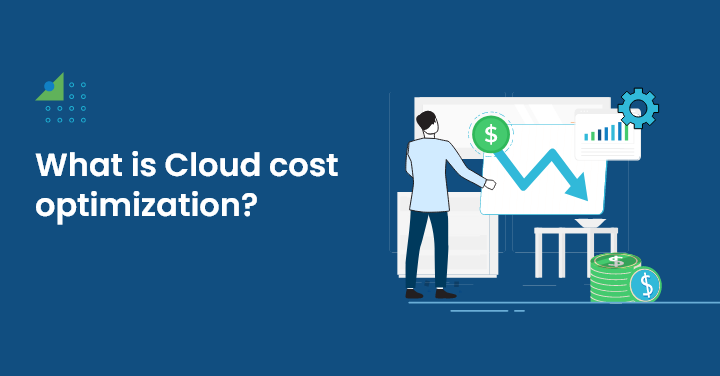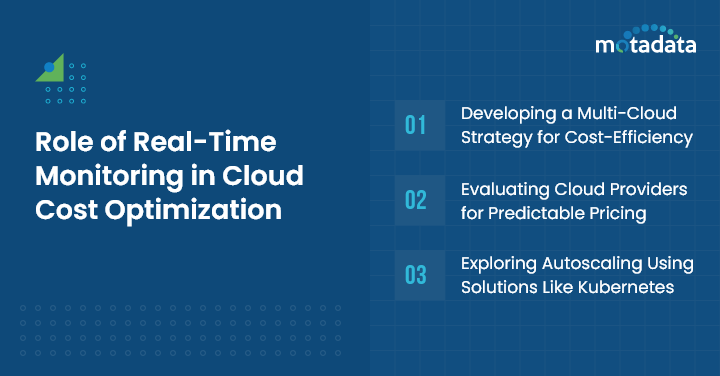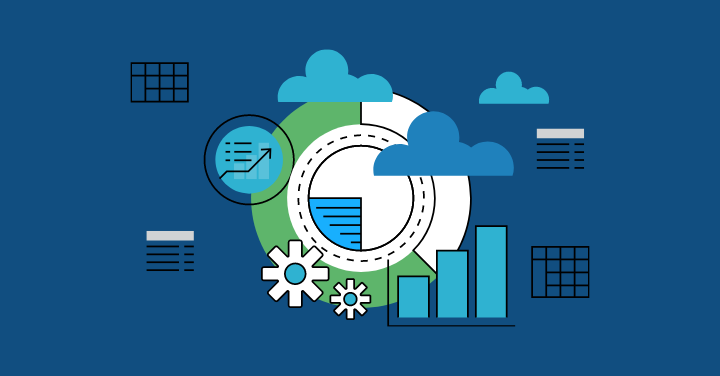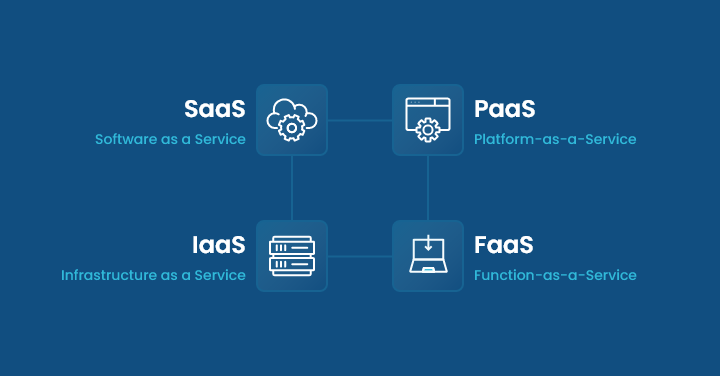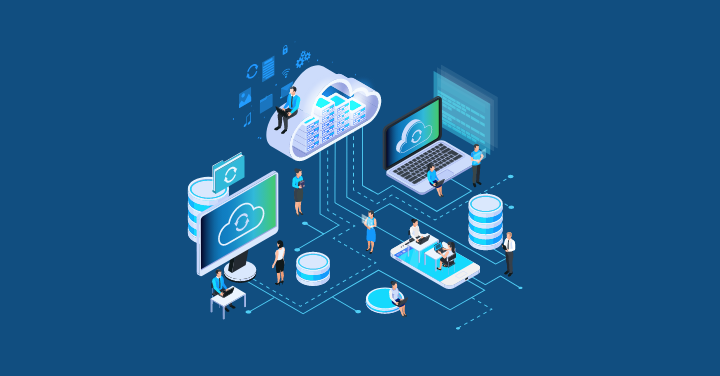Today, almost 90% of organizations use cloud computing services to reduce their operating expenses and scale with changing business requirements.
With the adoption of cloud computing technology, businesses are able to operate better and more efficiently.
However, the whole process of cloud computing demands access to a wide range of data center resources for processing, storing, and providing services.
This requirement can indirectly affect our cloud computing expenses. As a result, it is crucial for cloud operators to look after the cloud centers costs/expenses and maintain efficiency.
However, achieving this goal is not a simple task but requires a comprehensive strategy in which cloud infra monitoring is highly essential.
With the help of cloud infra monitoring tools, businesses will be able to better analyze the performance of their networks, track usage patterns, and make better decisions.
Before we proceed with which network monitoring tool can be best for your cloud center, let us understand how real-time monitoring plays a crucial role in cloud cost optimization.
What is Cloud cost optimization?
A large percentage of the cost budget is often spent on cloud services by various cloud centers.
To ensure that the budget is not being misused or overspent on areas that are of not much importance, cloud cost optimization is essential.
Cloud cost optimization is a practice or strategy that involves proper analysis of cloud resource usage to reduce expenses.
With the help of this strategy, cloud centers can easily track underutilized resources and tools, which helps cut down on waste and prevent overpaying. Further, it not only helps reduce cloud costs but also increases business value.
Essential Tools for Cloud Optimization and Cost Reduction
Google Cloud, Microsoft Azure, and AWS are a few leading platforms known to offer a wide range of services and technologies but come with an overwhelming price range.
Apart from these, there are so many options available that even some of the top IT professionals have trouble sorting through them.
With the help of cloud optimization services, users can easily pinpoint areas in which they can save expenses, boost productivity, and maintain cloud infrastructure to support ongoing optimization.
These services even provide access to cloud expert guidance that helps perform independent audits and highly key areas for cost optimization.
Using these tools and services, your businesses can grow and gain higher returns in the following important ways
Increase Visibility and Control
In order to manage costs, it is essential to have transparency and clear visibility into all data and expenses.
With the help of cloud optimization services, businesses can gain quick insights into how each business uses resources and spends in what areas, and accordingly improve their efficiency level.
With more visibility into expenses, businesses can better strategize and scale cloud services.
Access to Expertise and Skills
As more and more businesses are moving to the cloud, the demand for expert guidance is also increasing.
Without the right expertise, there will be a good gap in the cloud skills gap.
However, with cloud optimization services, the skills gap can be filled.
It provides access to technical expertise and the right tools that help in cloud optimization.
The Role of Real-Time Monitoring in Cloud Cost Optimization
With real-time monitoring, businesses gain comprehensive visibility into the usage of their resources and other key performance metrics.
It allows administrators to identify potential cost anomalies faster, resulting in better data-driven business decisions.
Businesses can further strategies and improve financial accountability using these insights and optimize resource utilization.
With proper monitoring, businesses can track and analyze cost breakdowns and trends, storage costs, and usage patterns.
There are also several cost management tools available in the market or cloud-native services that generate detailed reports on cost allocation and cost optimization recommendations.
It further helps monitor unused and unattached resources that contribute to unnecessary expenses.
Users can even set alerts that notify them of detecting any resource activity anomalies or unusual resource usage patterns.
Further, the deployment of resource management policies or automation scripts that automatically detect and mark underutilized resources will allow business users to take the necessary action.
In short, businesses may efficiently manage cloud expenses, minimize waste in the cloud, and maximize resource use by employing monitoring to detect unused and unattached resources.
Developing a Multi-Cloud Strategy for Cost-Efficiency
Using various cloud providers or cloud services allows businesses to select the best provider for particular workloads or applications.
This is known as a multi-cloud approach. Enterprises can attain cost-efficiency and resource optimization by formulating a multi-cloud strategy that capitalizes on the advantages of several cloud providers and efficiently handles resource utilization.
When creating a multi-cloud strategy, important factors to take into account are:
Evaluating Cloud Providers for Predictable Pricing
Assessing cloud providers for predictable pricing is essential for cost efficiency. Different pricing schemes, advantages for cost savings, and performance levels are provided by cloud providers.
Businesses can optimize costs, minimize potential cost anomalies, and guarantee cost-effective resource allocation based on particular business requirements by assessing cloud providers for predictable pricing.
The following are crucial procedures for assessing cloud providers for predictable pricing:
- Examining pricing documentation from cloud providers, such as savings plans, pricing models, and calculators
- Analyzing cloud price information, such as compute instance pricing, data storage fees, and data transfer charges
- Exploring other pricing strategies, including spot instances, in order to benefit from possible cost reductions during times of low demand
- Utilizing local services or cloud provider technologies that offer cost management visibility, suggestions for cost optimization, and thorough cost breakdown reports
Exploring Autoscaling Using Solutions Like Kubernetes
In cloud environments, investigating autoscaling with tools like Kubernetes is a useful technique for optimizing costs and utilizing resources.
Businesses may ensure optimal performance and cost-effectiveness by automatically adjusting resource allocation depending on application demand with autoscaling.
The following are essential procedures for exploring autoscaling with Kubernetes-like systems:
- Making use of container clusters such as Kubernetes to facilitate effective resource distribution and administration
- Optimizing autoscaling strategies according to past data, application performance indicators, and business needs
- Setting up resource constraints, scaling thresholds, and regulations to strike a compromise between the need for performance and cost-cutting goals
- cost optimization through the integration of autoscaling techniques with native services, cloud cost optimization technologies, or resources like spot instances
- Monitoring resource utilization, scaling events, and application performance on a regular basis to improve cost-effective resource allocation and adjust autoscaling strategies
How Can Motadata AIOps Improve Your Cloud Center’s Cost-Efficiency?
Motadata AIOps is an AI-Driven Network Observability tool that helps optimize cloud centers by providing clear visibility into resource usage and cost breakdowns.
Users can gain detailed insights into the network flow, log files, cloud data, performance, and other key metrics with this single tool.
Further, using these insights businesses can analyze the resource pattern and accordingly manage cost and other expenses.
With the help of this robust tool, users can gain consistent observability and machine learning-driven analytics for their hybrid architecture, including network devices, virtualization, apps, and cloud infrastructure.
It even gives quick updates on potential areas for cost reduction and enables users to maximize their cost savings.
The advanced automation feature and monitoring options supported by the platform help streamline cloud cost management.
FAQs
Here are some of the main benefits associated with optimizing cloud center cost-efficiency:
1. Saves extra cost by eliminating excessive expenses on unused resources and waste products
2. It makes management easier and provides a higher return on investment by enabling apps to run with less infrastructure.
3. Streamlines all financial operations and improves overall efficiency by redistributing resources to regions with significant demand.
Network monitoring solutions offer comprehensive visibility into resource usage, cost patterns, and performance that help in better decision-making. With the help of in-depth insights, businesses can optimize their costs, for example:
1. Identifying unused resources and eliminating them from the list will help limit unnecessary expenditure.
2. Tracking data transfer rates and storage expenses allows companies to spot possible areas for cost reduction.
3. Insights on usage patterns and cost breakdowns help in making data-driven decisions
4. Real-time alerts on cost spikes and anomalies help in making corrective measures before they cause any critical impact on the performance or business value.
The different key network metrics essential for cloud cost optimization are:
1. Network Bandwidth Utilization – Helps track unnecessary data transfer costs by monitoring network bandwidth usage.
2. Network Latency – Helps identify the root cause of potential performance issues, i.e., congestion or inefficiencies in network configuration that may lead to increased costs.
3. Network Traffic Patterns – Reduces unnecessary expenses from overprovisioning or underutilization by matching network resources with real usage patterns.
Here are a few best practices that will help in optimizing cloud costs:
1. Comply with corporate objectives when developing your internal budgeting and escalation procedures.
2. Properly track the way you use your resources and appropriately scale your infrastructure.
3. Monitor cost irregularities so that you can address expense issues before they severely affect your budget.


